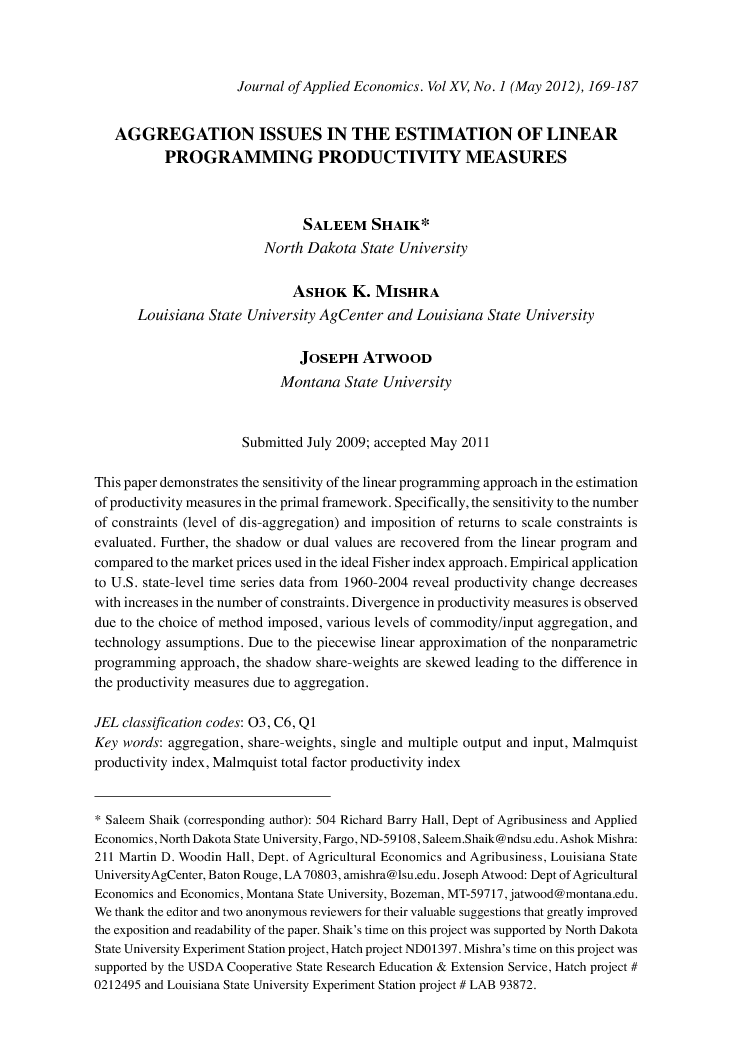ترجمه فارسی عنوان مقاله
مسائل تجمع در برآورد برنامه ریزی خطی بهره وری اقدامات
عنوان انگلیسی
AGGREGATION ISSUES IN THE ESTIMATION OF LINEAR PROGRAMMING PRODUCTIVITY MEASURES
| کد مقاله | سال انتشار | تعداد صفحات مقاله انگلیسی |
|---|---|---|
| 12257 | 2012 | 19 صفحه PDF |
منبع

Publisher : Elsevier - Science Direct (الزویر - ساینس دایرکت)
Journal : Journal of Applied Economics, Volume 15, Issue 1, May 2012, Pages 169–187
ترجمه کلمات کلیدی
- دانه بندی - اشتراک گذاری وزن - خروجی و ورودی یگانه و چندگانه - شاخص بهره وری کل عوامل -
کلمات کلیدی انگلیسی
aggregation,share-weights,single and multiple output and input,Malmquist productivity index,Malmquist total factor productivity index

